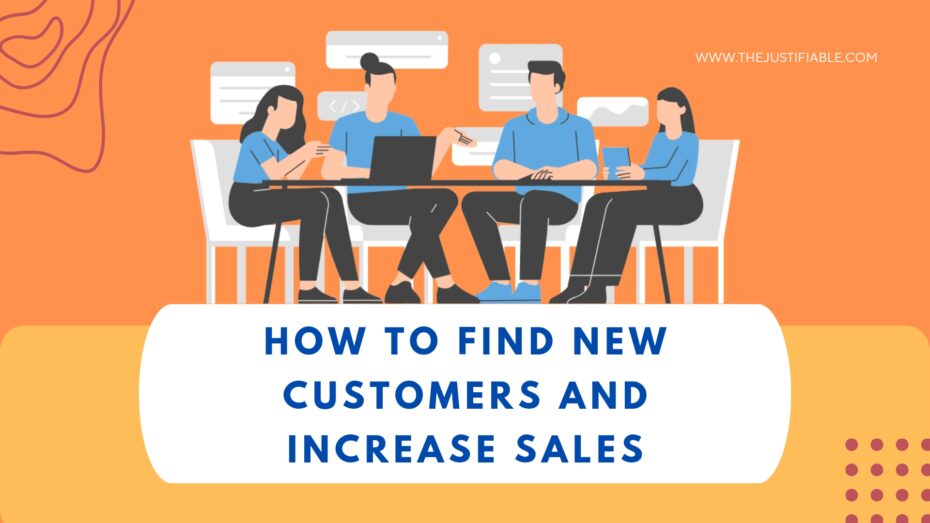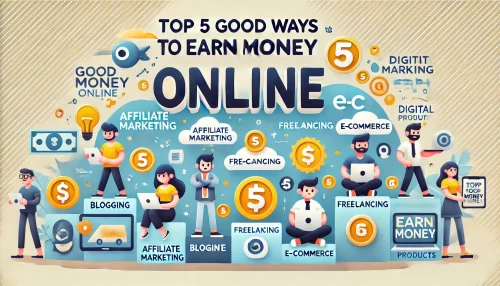Table of Contents
How to find new customers and increase sales is a question that echoes through the corridors of businesses across the globe, large and small. In today’s digital age, the competition for attention is fiercer than ever, making it crucial for businesses to stand out and connect with potential customers in innovative ways.
Whether you’re a startup looking to make your mark or an established company aiming to expand your customer base, the strategies to achieve these goals are multifaceted and ever-evolving.
This article delves into proven methods and fresh insights to not only attract new customers but also significantly enhance your sales figures. From leveraging the power of social media and SEO to understanding the intricacies of your audience’s needs, we’ll guide you through actionable steps to grow your business and elevate your market presence.
Unveil 5 Proven Strategies to Attract New Customers
Are you struggling to expand your customer base? Wondering how to find new customers and boost your sales effectively? In the vast sea of businesses vying for attention, standing out to attract and retain new customers is both an art and a science. This section explores five dynamic strategies that have been proven to draw in new clients and significantly increase sales figures.
From leveraging digital platforms to engaging in community outreach, these methods are designed to help you connect with potential customers in meaningful ways, offering genuine value that sets your business apart.
1. Leverage Social Media Insights for 30% More Leads
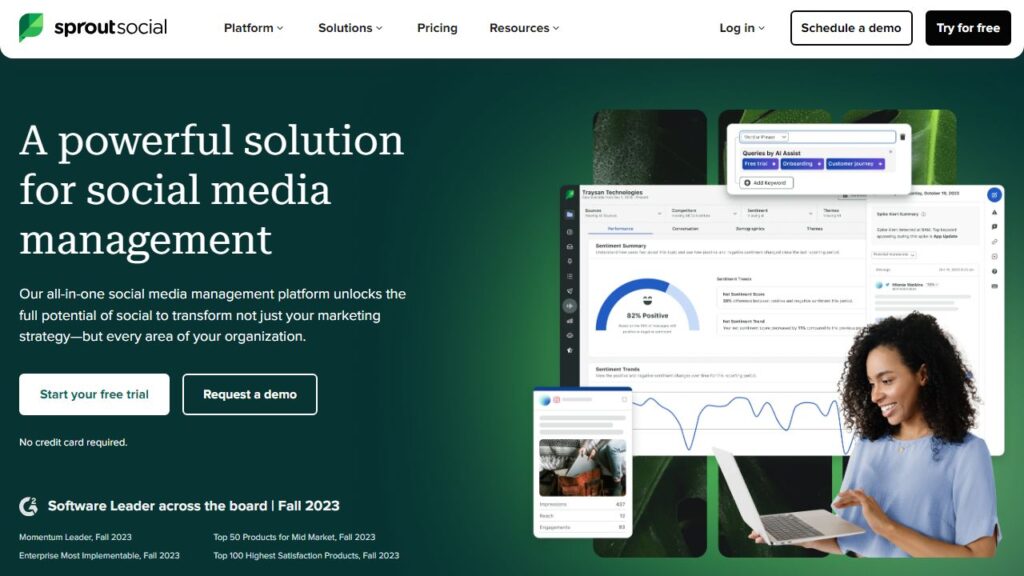
Social media is no longer just a space for socializing; it’s a powerful tool for businesses looking to understand and expand their audience. But how can you transform your social media efforts into a lead-generating machine?
The answer lies in leveraging insights to tailor your content and engagement strategies effectively. By analyzing data on user behavior, preferences, and engagement times, you can create content that resonates with your target audience, leading to a significant increase in leads.
Diving into social media analytics allows you to pinpoint what content drives engagement and conversion. This data-driven approach enables you to produce more of what works, reducing guesswork and enhancing your marketing ROI. Whether it’s informative blog posts, engaging videos, or compelling infographics, understanding your audience’s preferences can help you craft content that captures interest and encourages sharing.
Engagement is key to converting social media followers into customers. Responding to comments, messages, and mentions creates a sense of community and shows that your business values its audience. This personalized interaction not only fosters loyalty but also increases the likelihood of followers becoming customers.
Running targeted social media ad campaigns is another effective strategy to reach potential customers who have not yet discovered your brand. By using detailed targeting options based on demographics, interests, and behaviors, you can put your message in front of a highly relevant audience, significantly increasing the chance of attracting new leads and driving sales.
2. Harness SEO Tactics to Double Your Web Traffic
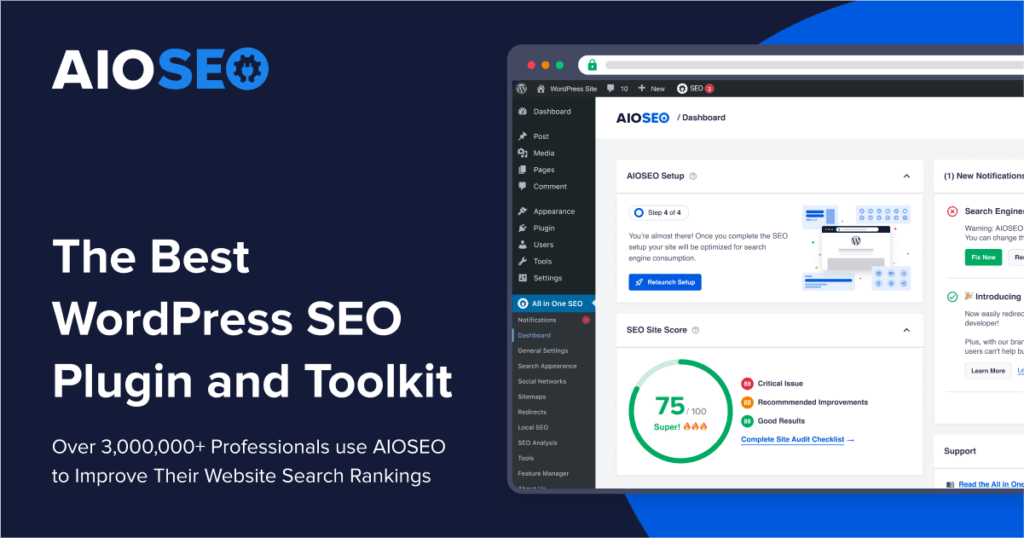
“SEO is not about gaming the system, it’s about learning how to play by the rules.” When looking to find new customers and increase sales, mastering the art of search engine optimization (SEO) is crucial. It’s about making your website more visible, relevant, and attractive to search engines and, by extension, to your potential customers. SEO tactics can significantly enhance your online presence, drawing in more traffic and, ultimately, converting visitors into loyal customers.
Understanding and implementing keyword research is the foundation of any successful SEO strategy. Identifying the right keywords—those your potential customers are searching for—allows you to tailor your content to meet their needs. This alignment between user intent and your content not only improves your visibility in search engine results pages (SERPs) but also ensures that the traffic to your site is more relevant and likely to convert.
On-page SEO is another vital component. This encompasses optimizing your website’s content and structure to ensure it is search engine friendly. From meta tags and headings to internal links and mobile optimization, each element plays a significant role in how search engines understand and rank your site. A well-optimized website offers a better user experience, keeping visitors engaged and encouraging them to explore your offerings further.
Off-page SEO, primarily focusing on link-building, amplifies your website’s authority and credibility. Earning backlinks from reputable sites in your industry signals to search engines that your content is valuable and trustworthy. This not only boosts your rankings but also exposes your brand to a wider audience, increasing the chances of attracting new customers.
Lastly, keeping abreast of SEO trends and algorithm updates is essential for maintaining and improving your web traffic. Search engines are continually evolving, and strategies that worked yesterday might not be as effective today. Staying informed and adaptable ensures that your SEO efforts are fruitful, driving sustained traffic growth and helping you to find new customers and escalate your sales.
3. Network Effectively: Join 3 Leading Industry Events
“In the world of business, it’s not just what you know; it’s who you know.” Networking is a timeless strategy for growth, providing unparalleled opportunities to find new customers and increase sales. By joining leading industry events, you not only stay on top of trends but also position your brand in front of potential clients and partners who can play a pivotal role in your business’s expansion.
Selecting the right events is the first step in effective networking. Look for conferences, seminars, and trade shows that attract a high concentration of professionals in your industry. These gatherings are hotspots for innovation, collaboration, and relationship-building. Participating in these events allows you to showcase your products or services, gain insights into your competitors, and understand emerging trends that could impact your business strategy.
Preparing an elevator pitch is crucial for making a strong impression. This brief, persuasive speech should highlight what makes your business unique, how you solve specific problems, and what benefits you offer to customers or partners. A compelling elevator pitch can spark interest, leading to more in-depth conversations, potential collaborations, or sales.
Engaging actively during the event is key to networking success. Attend workshops, join discussions, and participate in networking sessions. These interactions provide valuable opportunities to connect with industry peers, share experiences, and discuss potential business opportunities. Remember, the goal is to build relationships, not just to collect business cards.
Follow-up is where many opportunities are won or lost. After the event, reach out to the contacts you’ve made with personalized messages, expressing your interest in continuing the conversation. This follow-up can lead to meetings, collaborations, or sales discussions, turning those initial connections into valuable business relationships. Effective networking at industry events can significantly broaden your reach, helping you find new customers and elevate your sales to new heights.
4. Engage with Powerful Content Marketing Techniques
Did you know that content marketing generates over three times as many leads as outbound marketing and costs 62% less? In the quest to find new customers and increase sales, content marketing stands out as a powerful tool to attract, engage, and retain an audience. By delivering valuable, relevant content, businesses can build trust with potential customers, establishing a brand as a thought leader in its industry.
Creating a content marketing strategy begins with understanding your audience’s needs and interests. This involves detailed research to uncover the questions your potential customers are asking and the types of content they prefer. Whether it’s blog posts, videos, infographics, or podcasts, your content should provide answers and solutions, helping to solve your audience’s problems and positioning your brand as their go-to resource.
The next step is to ensure that your content is discoverable. SEO plays a crucial role here, making your content visible on search engines when potential customers are looking for information. But it’s not just about keywords; your content must also be engaging, informative, and shareable to encourage organic growth through social media shares and backlinks, which further enhances your visibility and reach.
Distribution is key to getting your content in front of the right eyes. Utilize your social media channels, email newsletters, and even guest posting opportunities on other websites to spread your content far and wide. Each platform offers a unique way to engage with your audience, so tailor your approach to fit the medium and the preferences of your target demographic.
5. Optimize Email Campaigns for a 40% Increase in Conversions
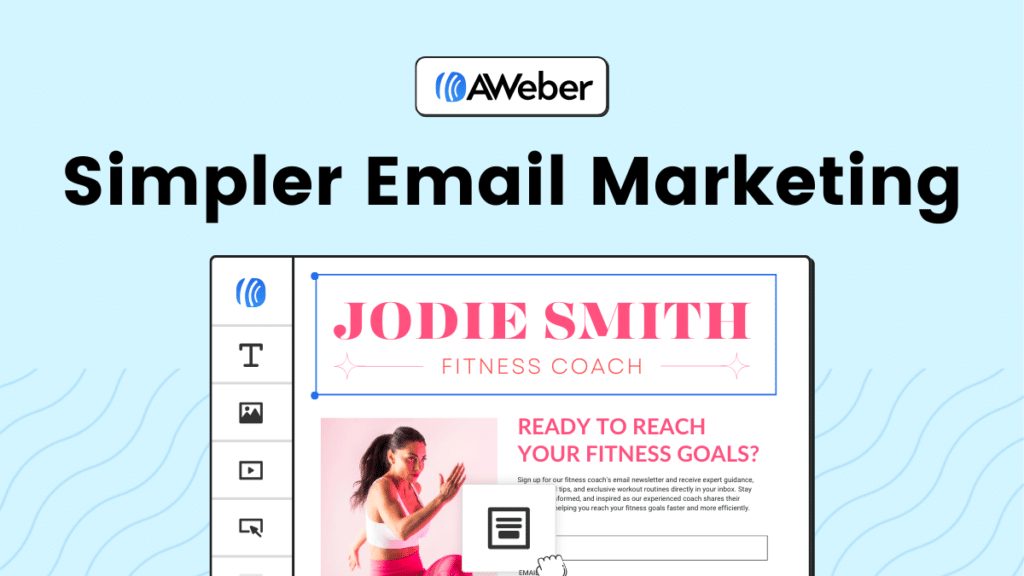
Email marketing remains one of the most effective tools in a marketer’s arsenal, boasting an ROI of $42 for every $1 spent. However, to leverage email campaigns to their fullest potential and see a significant increase in conversions, it’s crucial to adopt a strategic, personalized approach. This means moving beyond generic blasts to creating targeted, relevant communications that resonate with your audience at a personal level.
The foundation of an optimized email campaign is segmentation. By dividing your email list into smaller, more specific groups based on demographics, purchase history, or engagement levels, you can tailor your messages to meet the unique needs and interests of each segment. This personalization enhances the relevance of your emails, making recipients more likely to open, read, and take action.
Crafting compelling subject lines is an art that can dramatically improve your open rates. Your subject line is the first impression you make on your recipients, and it should be intriguing, clear, and relevant to their interests. A/B testing different subject lines can help you discover what resonates best with your audience, allowing you to refine your approach and maximize engagement.
The content of your emails should provide genuine value to your recipients. Whether it’s exclusive offers, informative content, or updates on your latest products or services, your emails should be designed to benefit the reader. Include clear calls-to-action (CTAs) that guide recipients towards the next step, whether it’s making a purchase, signing up for a webinar, or visiting your website to learn more.
Finally, analyze the performance of your email campaigns regularly. Track metrics such as open rates, click-through rates, conversion rates, and unsubscribe rates to gauge the effectiveness of your strategies. Use this data to make informed decisions, continually optimize your campaigns, and achieve a significant increase in conversions. Optimized email campaigns are not just about selling; they’re about building relationships and providing value, turning subscribers into loyal customers and advocates for your brand.
Understanding Your Audience: The Key to 50% Sales Growth
Just as a tailor meticulously measures to ensure a perfect fit, businesses must precisely understand their audience to tailor marketing strategies that resonate deeply. This precision in understanding and engagement is not just a practice but a pathway to potentially increasing sales by up to 50%.
In the realm of “how to find new customers and increase sales,” knowing your audience goes beyond mere demographics. It’s about grasping their needs, preferences, and behavior to create marketing that feels personally crafted for each individual.
Craft Buyer Personas to Elevate Engagement
Creating buyer personas is like drawing detailed portraits of your ideal customers based on real data and some educated speculation about their demographics, behavior patterns, motivations, and goals. These personas bring your target audience to life, making it easier for your marketing team to understand and relate to them on a personal level. By envisioning your audience as real people with specific needs and desires, you can tailor your content, messaging, and product development to better meet their expectations.
Start with gathering data from your existing customer base through surveys, interviews, and analysis of online behavior. Look for patterns and commonalities that can help you segment your audience into distinct personas. Consider not just who they are demographically, but what challenges they face, what goals they aspire to, and what drives their purchasing decisions. This comprehensive view turns abstract data into something much more tangible and actionable.
Once you have your personas, use them to guide all aspects of your marketing strategy—from the tone of voice used in your content to the channels you choose for distribution. Personas can help you predict how your audience might react to different approaches, allowing you to fine-tune your campaigns for maximum relevance and engagement. This targeted strategy not only increases the effectiveness of your marketing efforts but also builds a deeper connection with your audience.
Engagement doesn’t stop at the first purchase; it extends into how you communicate with customers throughout their lifecycle. Buyer personas can inform post-sale marketing efforts, helping you to tailor upselling and cross-selling messages, loyalty programs, and customer support initiatives. By continually aligning your strategies with the evolving needs and preferences of your personas, you can elevate customer satisfaction and loyalty, driving sustained sales growth.
Analyze Customer Data for Personalized Marketing
In a world overflowing with generic marketing messages, personalization stands out as a beacon of relevance. By analyzing customer data, businesses can unlock a treasure trove of insights that enable the delivery of highly personalized marketing messages, directly addressing the unique needs and interests of each customer. This approach not only enhances the customer experience but also significantly boosts engagement and conversion rates.
Begin with collecting and integrating data from all customer touchpoints, including website visits, social media interactions, purchase history, and customer service engagements. This holistic view of your customer’s journey allows you to identify patterns, preferences, and pain points. Leveraging this data effectively means you can craft marketing messages that feel bespoke, significantly increasing the likelihood of resonating with your audience.
Advanced analytics and machine learning tools can help sift through this data, identifying opportunities for personalization at scale. From personalized email marketing campaigns that address customers by name and reference their past purchases to dynamic website content that adapts based on the visitor’s interests, the possibilities are endless. The key is to use data not just to sell, but to solve problems and fulfill needs, thereby building trust and loyalty.
It’s important to navigate the balance between personalization and privacy carefully. Ensure that your data collection and usage practices are transparent and comply with regulations like GDPR. By respecting your customers’ privacy and using their data responsibly to enhance their experience, you solidify the relationship and encourage ongoing engagement.
Elevate Your Online Presence to Boost Customer Acquisition
It’s true, the digital marketplace is crowded, and standing out can feel like an uphill battle. However, with strategic efforts to elevate your online presence, finding new customers and increasing sales becomes not just a possibility but a reality.
In today’s digital age, your online presence acts as the storefront for your business, open to a global audience 24/7. Enhancing this presence is crucial for attracting more visitors, building brand awareness, and ultimately, boosting customer acquisition. Let’s explore how focusing on website optimization and mastering Google Ads can significantly contribute to these goals.
Website Optimization: A Gateway to 60% More Visitors
Your website is often the first point of contact between your business and potential customers. Making a strong first impression is crucial, and optimizing your website can lead to a dramatic increase in visitors. Start with ensuring that your site is mobile-friendly. With the majority of internet browsing now done on mobile devices, a website that isn’t mobile-optimized is likely to drive potential customers away.
Speed is another critical factor. A website that loads quickly improves user experience and positively impacts your search engine rankings. Tools like Google’s PageSpeed Insights can provide valuable recommendations on how to make your website faster. Remember, every second counts, and reducing your site’s load time can significantly reduce bounce rates and improve overall engagement.
SEO is the backbone of website optimization. By carefully selecting keywords and incorporating them into your website’s content, you can improve your visibility in search engine results. This involves optimizing not just the text on your pages, but also meta tags, alt text for images, and even the structure of your URLs.
Content is king in the digital marketing world. High-quality, valuable content that addresses the needs and interests of your audience can attract more visitors to your site. Blog posts, videos, infographics, and customer testimonials are just a few examples of content that can engage users, keep them on your site longer, and encourage them to explore your offerings in depth.
Master Google Ads for Immediate Traffic Increase
While organic reach is essential, incorporating Google Ads into your strategy can provide an immediate boost in traffic and customer acquisition. Google Ads allows you to place your business in front of potential customers exactly when they’re searching for products or services like yours. The key to success with Google Ads is targeting the right keywords. Utilize tools like Google Keyword Planner to find high-intent keywords that potential customers are using to find businesses like yours.
Creating compelling ad copy is crucial. Your ads should clearly communicate the value of your offering and include a strong call-to-action (CTA) that encourages users to click through to your website. Testing different variations of your ad copy can help you determine what resonates best with your target audience, maximizing the effectiveness of your campaigns.
Remarketing is a powerful feature of Google Ads that allows you to target users who have previously visited your website but did not make a purchase. By displaying targeted ads to these users as they browse the web, you can keep your brand top of mind and entice them back to your site to complete a purchase or engage with your content further.
Finally, monitoring and adjusting your campaigns based on performance data is essential for maximizing ROI. Google Ads provides a wealth of analytics that can help you understand which ads are performing well, which keywords are driving traffic, and where there might be room for improvement. Regularly reviewing this data and making informed adjustments to your campaigns can significantly increase their effectiveness, driving more traffic to your site and ultimately, increasing sales.
Innovative Approaches to Enhance Customer Loyalty
Believe it or not, a 5% increase in customer retention can boost profits by 25% to 95%. In the competitive quest to find new customers and increase sales, it’s easy to overlook the immense value of nurturing existing relationships.
Customer loyalty is a powerful asset that can significantly impact your bottom line, and innovative strategies to enhance this loyalty are more important than ever. Let’s explore how implementing a reward system and offering personalized experiences can transform satisfied customers into loyal advocates for your brand.
Implement a Reward System to Increase Repeat Business by 25%
Introducing a reward system is a proven method to encourage repeat business and foster deep loyalty among your customer base. Surprisingly, customers enrolled in loyalty programs are not just more likely to return but also to spend more during each visit. Begin by designing a rewards program that aligns with your business goals and appeals to your customers’ values. Whether it’s a points-based system, exclusive perks, or members-only discounts, the key is to offer genuine value that incentivizes repeat purchases.
Transparency and simplicity are the cornerstones of a successful reward system. Customers should easily understand how to earn rewards and what benefits they’re entitled to. This clarity enhances the customer experience and amplifies the perceived value of your program. Utilize your digital platforms, such as your website and social media channels, to promote your rewards program and keep it top of mind for your customers.
Personalization can significantly elevate your rewards program. By leveraging customer data, you can tailor rewards and communications to fit individual preferences and purchasing behaviors. This level of personalization not only makes your customers feel valued and understood but also increases the effectiveness of your program, driving higher engagement and loyalty.
Monitoring the performance of your rewards program is crucial to its success. Regularly analyze participation rates, redemption rates, and the impact on customer retention and sales. This data will provide insights into what’s working and what can be improved, allowing you to refine your program over time. Remember, the goal of your rewards program is to build lasting relationships that benefit both your customers and your business.
Personalized Experiences: The Path to Customer Retention
In a world where consumers are bombarded with generic marketing messages, personalized experiences stand out as a beacon of relevance and care. Personalization goes beyond addressing a customer by their name in an email. It’s about creating experiences that feel uniquely tailored to each individual, from product recommendations to customized communication. This level of personalization can dramatically improve customer satisfaction and loyalty.
Start by gathering and analyzing data on your customers’ preferences, behaviors, and past interactions with your brand. This information will enable you to deliver content, offers, and products that are most relevant to each customer. For instance, an ecommerce store can use browsing history and purchase data to suggest items that a customer is likely to be interested in, enhancing the shopping experience.
Technology plays a pivotal role in enabling personalized experiences. Utilize CRM systems, marketing automation tools, and AI-driven analytics to segment your audience and deliver targeted messages at scale. These technologies allow for efficient personalization without losing the personal touch that makes the experiences feel genuine.
Remember, the ultimate goal of personalization is to deepen the relationship between your brand and your customers. It’s about showing that you understand and value their unique needs and preferences. By consistently delivering personalized experiences, you not only increase customer loyalty but also transform customers into vocal advocates for your brand, driving word-of-mouth referrals and ultimately, increasing sales.
Measuring Success: Key Metrics to Track Progress
In the journey to find new customers and increase sales, measuring your progress is not just a step—it’s the compass that guides your strategy. Understanding the impact of your efforts is crucial to refining your approach and achieving sustained growth.
The right metrics act as a mirror, reflecting the true performance of your strategies against your goals. From conversion rates to customer lifetime value, let’s dive into the key metrics that are essential for tracking your success and steering your business towards its targets.
Monitor Conversion Rates for Continuous Improvement
Conversion rates stand at the heart of measuring the effectiveness of your marketing and sales strategies. They tell you a clear story: how well are you turning visitors into customers? Monitoring this metric is crucial for identifying the strengths and weaknesses of your tactics, allowing you to make data-driven decisions for continuous improvement. Whether it’s tweaking your website’s design, refining your call-to-actions, or adjusting your ad campaigns, focusing on conversion rates can lead to significant enhancements in your results.
Start by establishing a baseline of your current conversion rates to understand where you stand. This involves tracking not just the final sales conversions but also micro-conversions along the customer journey, such as newsletter sign-ups, eBook downloads, or product demo requests. Each of these actions is a step closer to a sale and provides insight into how effectively you are engaging potential customers.
Improving your conversion rates often requires a mix of A/B testing and customer feedback. Experiment with different elements of your marketing funnel, from landing pages to email marketing messages, to see what resonates most with your audience. Coupling this experimental data with direct customer feedback can uncover powerful insights into what drives your customers to take action.
Remember, conversion rate optimization is an ongoing process. Markets, technologies, and customer preferences evolve, and so should your strategies. By continuously monitoring and adjusting based on your conversion rates, you can ensure that your tactics remain effective and aligned with your audience’s needs, driving sustained growth in sales.
Analyze Customer Lifetime Value for Long-Term Growth
Customer Lifetime Value (CLV) is a metric that goes beyond immediate sales to illuminate the long-term value of each customer. Understanding CLV helps you make informed decisions about how much to invest in acquiring new customers and retaining existing ones. It’s a powerful indicator of the health and potential of your customer relationships, guiding strategies to maximize profitability and long-term growth.
Calculating CLV involves analyzing the net profit attributed to the entire future relationship with a customer. This requires a comprehensive look at your customers’ buying behaviors over time, including the frequency of purchases, average order value, and retention rates. By understanding the long-term value of your customers, you can tailor your marketing and customer service efforts to enhance satisfaction, loyalty, and ultimately, the profitability of each customer segment.
Investing in strategies to increase CLV pays dividends. This might include loyalty programs, personalized marketing, and exceptional customer service. By focusing on increasing the average order value, extending the customer lifespan, and enhancing the purchase frequency, you can significantly boost your CLV. These efforts not only contribute to immediate sales growth but also build a solid foundation for sustained success.
Monitoring and working to improve CLV should be an integral part of your business strategy. It encourages a shift from short-term gains to long-term relationships, aligning your business practices with the goal of creating value for both your customers and your company. With a clear focus on CLV, you’re not just aiming to find new customers and increase sales; you’re building a business that thrives on the loyalty and growth of its customer base.
Overcoming Common Barriers to Finding New Customers
How can your business break through the noise and barriers to connect with new customers? In the competitive journey to find new customers and increase sales, several obstacles can stand in the way, from price sensitivity to trust issues. Overcoming these barriers requires strategic thinking and a deep understanding of what drives customer decisions.
By addressing these challenges head-on, businesses can open up new avenues for growth and engagement. Let’s explore effective strategies for overcoming common barriers to customer acquisition.
Addressing Price Sensitivity with Value Propositions
Price sensitivity is a common hurdle in attracting new customers, especially in markets crowded with alternatives and substitutes. How can you make your offerings stand out when price comparison is just a click away? The answer lies in crafting compelling value propositions that highlight the unique benefits and solutions your products or services offer. It’s about shifting the conversation from price to value, making it clear why your offering is worth the investment.
Begin by understanding the specific needs and pain points of your target audience. What are they truly seeking? Is it time savings, quality, convenience, or something else? Your value proposition should speak directly to these needs, making a case for how your product or service provides the best solution. Remember, features tell, but benefits sell. Focus on the tangible outcomes and improvements your customers can expect.
Another effective strategy is to bundle products or services together, creating an offering that delivers greater value than the sum of its parts. Bundles can make the purchasing decision easier for customers by providing a complete solution at a perceived discount. This approach not only addresses price sensitivity but also increases the average order value, benefiting both the customer and your business.
Transparency about pricing and the value customers receive can also mitigate price sensitivity. Being upfront about costs, including any additional fees or charges, builds trust. Coupling this transparency with strong customer service and support ensures that customers feel valued and understood, further reinforcing the perceived value of your offering.
Tackling Trust Issues Through Customer Reviews
In today’s digital world, trust is both a currency and a barrier. How can businesses build trust with potential customers who are bombarded with options and possibly skeptical of marketing claims? Leveraging customer reviews and testimonials is a powerful way to build credibility and reassure prospects. Real stories and experiences from satisfied customers can be more convincing than the most polished marketing copy.
Encourage your happy customers to share their experiences by leaving reviews on your website, social media platforms, or third-party review sites relevant to your industry. Make it easy and convenient for them to do so by providing links and simple instructions. Remember, a diverse range of reviews, including those that offer constructive criticism, can enhance credibility by showing that your reviews are genuine.
Showcasing testimonials and case studies on your website and in your marketing materials can also be effective. These detailed stories not only demonstrate the value of your products or services but also allow potential customers to see themselves in the success stories of others. This can be particularly persuasive in industries where trust and reliability are paramount.
Responding to reviews, both positive and negative, shows that your business values feedback and is committed to customer satisfaction. This engagement can turn a skeptical visitor into a loyal customer, as it demonstrates your company’s dedication to quality and service. In addressing trust issues, the goal is to create an environment where potential customers feel informed, reassured, and confident in their decision to choose your business.
Future-Proofing: Adapting to Market Changes for Sustained Growth
In the ever-evolving landscape of business, how can you ensure that your strategies for finding new customers and increasing sales remain effective over time? The key lies in future-proofing your approach, continuously adapting to market changes to sustain growth. The ability to anticipate shifts in the market, adapt to new consumer behaviors, and leverage cutting-edge technologies like AI for predictive analysis is crucial.
This not only helps in maintaining relevance but also in staying a step ahead of the competition. Let’s explore how staying attuned to emerging trends and harnessing AI can be your allies in this dynamic environment.
Stay Ahead with Emerging Trends in Consumer Behavior
Understanding and adapting to emerging trends in consumer behavior is essential for businesses aiming to find new customers and increase sales. In a world where preferences and behaviors can shift rapidly, keeping your finger on the pulse of these changes allows you to adjust your offerings and marketing strategies to meet evolving customer needs. This proactive approach not only enhances customer satisfaction but also opens up new opportunities for growth.
Start by investing in market research to gain insights into the latest trends affecting your industry. This could involve analyzing social media, conducting surveys, or monitoring industry reports. The goal is to identify patterns that can inform your business strategies, from product development to marketing campaigns. Being one of the first to recognize and act on these trends can give you a competitive edge.
Engaging with your audience through social media and other digital platforms offers a direct line to their preferences and changing behaviors. Use these interactions to gather feedback, test new ideas, and understand what matters most to your customers. This ongoing dialogue is invaluable for staying relevant and responsive to market shifts.
Additionally, consider forming partnerships with influencers or thought leaders in your industry. These collaborations can provide unique insights into emerging trends and offer new platforms for engaging with potential customers. By aligning with those who have their ear to the ground, you can navigate changes more effectively and position your business for sustained growth.
Leverage AI for Predictive Analysis in Customer Acquisition
Artificial intelligence (AI) has transformed the landscape of customer acquisition, offering unprecedented capabilities for predictive analysis. By harnessing AI, businesses can analyze vast amounts of data to forecast future trends, identify potential new markets, and personalize marketing efforts at scale. This not only enhances the efficiency of your strategies but also significantly improves their effectiveness in attracting new customers.
Begin by integrating AI tools into your data analysis processes. These tools can sift through customer data, identifying patterns and insights that might be invisible to the human eye. From predicting which customers are most likely to convert to identifying emerging segments in your market, AI-driven analysis can guide your strategic decisions and help you allocate resources more effectively.
Personalization is another area where AI can have a profound impact. By analyzing individual customer behaviors and preferences, AI can help tailor your marketing messages and offers to match the specific needs of each prospect. This level of personalization not only increases the likelihood of conversion but also strengthens customer relationships, enhancing loyalty and retention.
Investing in AI and machine learning technologies may seem daunting, but the benefits are undeniable. Start small by adopting tools that integrate with your existing systems and processes. As you become more comfortable with these technologies, you can explore more advanced applications that offer deeper insights and more sophisticated predictive capabilities.
Frequently Asked Questions (FAQ)
How can I find new customers for my business?
To find new customers, start by identifying your target audience and understanding their needs. Use SEO to improve your website’s visibility, leverage social media to reach a wider audience, attend industry events for networking, and utilize content marketing to provide valuable information that attracts potential customers.
What are some effective sales strategies to increase revenue?
Effective sales strategies include optimizing your sales funnel for better conversion rates, personalizing your marketing efforts based on customer data, engaging with leads through targeted email campaigns, and offering exceptional customer service to encourage repeat business.
How can social media help in acquiring new customers?
Social media platforms allow you to engage with a broad audience, build brand awareness, and drive traffic to your website. By analyzing social media insights, you can tailor your content to what resonates with your audience, run targeted ads, and build a community around your brand, leading to increased leads and sales.
What role does SEO play in finding new customers?
SEO (Search Engine Optimization) enhances your website’s visibility on search engines, making it easier for potential customers to find you. By optimizing your website with relevant keywords, high-quality content, and a user-friendly design, you can attract more organic traffic, leading to more customer acquisition.
How can I use email marketing to boost sales?
Email marketing is a powerful tool for nurturing leads and maintaining customer relationships. By segmenting your email list and sending personalized messages, you can provide targeted offers, updates, and valuable content that encourage recipients to take action, ultimately boosting conversions and sales.
Why is content marketing important for attracting new customers?
Content marketing builds trust and authority by providing valuable information that addresses your audience’s needs and pain points. By consistently producing high-quality content, such as blog posts, videos, and infographics, you can attract and engage potential customers, driving traffic and generating leads.
What are the best practices for networking to find new clients?
To effectively network, choose the right industry events, prepare a compelling elevator pitch, actively engage in conversations, and follow up with contacts after the event. Building genuine relationships and showcasing your expertise can help you connect with potential clients and partners.
How do customer loyalty programs help increase sales?
Customer loyalty programs incentivize repeat purchases by offering rewards, discounts, or exclusive perks. By making customers feel valued and appreciated, these programs encourage repeat business and enhance customer retention, leading to increased sales and profitability.
How can I optimize my website to attract more visitors?
Optimize your website by ensuring it’s mobile-friendly, fast-loading, and SEO-optimized. Use high-quality content, clear navigation, and strong calls-to-action to improve user experience. Regularly update your site with fresh content and engage visitors to reduce bounce rates and increase conversions.
What metrics should I track to measure sales growth?
Key metrics to track include conversion rates, customer acquisition costs, customer lifetime value, and return on investment (ROI) for marketing campaigns. Analyzing these metrics helps you understand the effectiveness of your strategies and identify areas for improvement.
How can I overcome price sensitivity when acquiring new customers?
Address price sensitivity by clearly communicating the value of your product or service. Highlight the benefits and unique features that set your offerings apart from competitors. Offering bundled products or services at a discounted rate can also make your prices more attractive.
What are some common barriers to finding new customers?
Common barriers include price sensitivity, lack of brand awareness, and trust issues. Overcoming these barriers requires strategic marketing efforts, such as crafting compelling value propositions, building a strong online presence, and leveraging customer reviews to establish credibility.
How can I use Google Ads to find new customers?
Google Ads allows you to target potential customers based on specific keywords and demographics. By creating compelling ad copy and using remarketing strategies, you can attract new visitors to your website, increase traffic, and ultimately convert these visitors into customers.
What are the benefits of using personalized marketing strategies?
Personalized marketing strategies improve customer engagement by tailoring messages to individual preferences and behaviors. This approach enhances the customer experience, increases the likelihood of conversion, and builds stronger relationships, leading to higher customer retention and sales.
How can I use customer data to improve my marketing efforts?
Analyzing customer data provides insights into buying behaviors, preferences, and pain points. Use this data to segment your audience, personalize marketing messages, and optimize your product offerings. By aligning your marketing efforts with customer needs, you can enhance engagement and drive sales growth.


